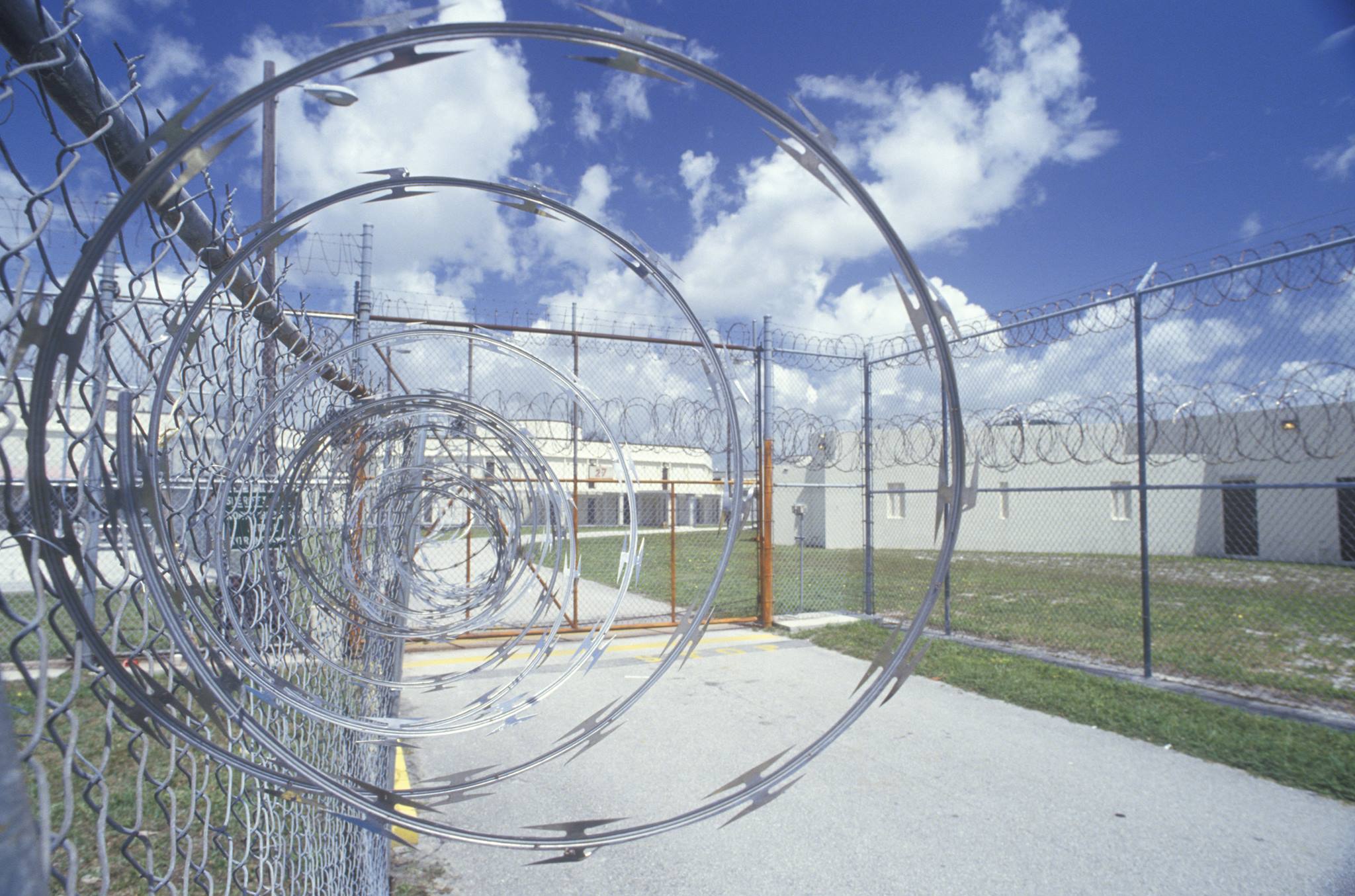Prisoner Classification and BOP Designation
How are prisoners Designated?
Prisoners are classified by the BOP according to procedures set forth in Program Statement P5100.08. See U.S. Dep’t of Justice, Bureau of Prisons, Program Statement P5100.08 (Sept. 2006). All biographical data for a particular prisoner is entered into the BOP database system, SENTRY, which produces a security score based on individual characteristics entered. This score determines the minimum security level permitted, at which point an appropriate facility is identified typically within 500 miles of the release residence designated by the prisoner. The placement authorized by the security score may be overridden, to the benefit or detriment of the individual prisoner, by variables known as Public Safety Factors or Management Variables. A custody level is also assigned to each inmate within any given security-level institution.
Scoring
Prisoner scoring utilizes the following data: (1) sentencing, (2) programming recommendations, (3) background information from the Judgment, (4) the Statement of Reasons (SOR), and (5) the PSR. Individual components of that score are:
- Voluntary Surrender? 1 No (0 points) Yes (-3 points) Only applies to cases in which prisoner was not escorted to prison for service of sentence, surrender occurred post-sentencing, and surrender was not to U.S. Marshals.
(Actually, they can surrender to the USM and get credit for the -3. Sometimes they are ordered to V/S to the USM).
Severity of the Current Offense?2 Lowest (0 points) Low Moderate (1 point) Moderate (3 points) High (5 points) Greatest (7 points)
- Criminal History Score in PSR? 3 0-1 (0 points) 2-3 (2 points) 4-6 (4 points) 7-9 (6 points) 10-12 (8 points) 13+ (10 points)
- Documented History of Violence (minor/serious)? 4 None (0 points/0 points)
> 15 years (1 point/2 points) 10-15 years (1 point/4 points) 5-10 years (3 points/6 points) <5 years (5 points/7 points) - History of Escapes/Attempts? (minor/serious)?5
- Existing detainer None (0 points/0 points) >15 years (1 point/3 points) 10-15 years (1 point/3 points) 5-10 years (2 points/3 points) < 5 years (3 points/3 points)
- (7) Severity of Instant Offense None (0 points) Lowest/Low Moderate (1 point) Moderate (3 points) High (5 points) Greatest (7 points)
- (8) Age? 0-1 (0 points) 55+ (0 points) 36-54 (2 points) 25-35 (4 points) <25 (8 points)
- Education Level? High School Graduate/GED (0 points) Progress on GED (1 point)
- No Degree/Not Progressing (2 points)
- Drug/Alcohol Abuse? None/>5 years (0 points) <5 years (1 point)
The total of points assigned in these categories is the security score used for purposes of designation. Using the inmate’s Security Score and Custody Level (discussed below), available designations are defined in P5100.08 according to the following table.
Practical Tips
- Under Severity of Current Offense, points are assessed reflecting the most severe documented instant offense behavior regardless of the conviction offense.
( AND IF AN INMATE RELEASES FROM A STATE SENTENCE TO A FEDERAL SENTENCE WITHOUT A BREAK IN CUSTODY, IF THE STATE SENTENCE IS MORE SEVERE, THAT WILL BE SCORED AS THE INSTANT OFFENSE) Make sure you fight to remove any behavior that is not properly documented! Do your best to remove language regarding such behavior from the PSR.
- Under History of Violence, the severity of the act of violence is assessed by the underlying conduct, not by the finding or conviction. Make sure you fight to remove any behavior that is not properly documented! Do your best to remove language regarding such behavior from the PSR.
- If there is a pending charge, points are added under Detainer based on the documented behavior. No points are added for ICE detainers.
- The Education Level requires that the inmate’s education level be verified. Provide documentation to the probation officer if necessary.
Public Safety Factors
Separate from the above security score are Public Safety Factors (PSFs) that can individually affect designations. Up to three PSFs can be waived by the designation coordinator thereby giving an inmate the possibility of a lower security institution. The PSFs are as follows:
- Sentence Length (males only). Unless waived, a male inmate with more than (1) ten years remaining to serve will be housed in at least a Low-security level institution, (2) twenty years remaining will be housed in at least a Medium security level institution, and (3) thirty years remaining will be housed in at least a High-security level institution.
- Disruptive Group (males only). If validated as a member of a disruptive group, a prisoner will be assigned a “High” security level.
- Greatest Severity Offense (males only). If a current offense falls within the category of “Greatest Severity,” prisoners may receive a minimum security level of “Low” unless waived.
- Sex Offender. If the PSR or other official documentation “clearly indicates” behavior that may be characterized as a sex offense, the prisoner may receive a minimum security level of “Low” unless waived.
- Threat to Government Officials. If falling within this category, prisoners may receive a minimum security level of “Low” unless waived.
- Deportable Alien. A prisoner may receive a minimum security level of “Low.”
- Violent Behavior (females only). A female inmate whose current term of confinement or history involves two convictions (or findings of the commission of a prohibited act by the DHO) for serious incidents of violence within the last five years will be assigned to at least a Low-security level institution unless waived.
- Serious Escape. A female inmate who has been involved in a serious escape within the last ten years will be assigned to the Carswell Administrative Unit unless the PSF has been waived. A male inmate who has escaped from a secure facility (prior or instant offense) with or without the threat of violence or who escapes from an open institution or program with a threat of violence will be housed in at least a Medium security level institution unless the PSF has been waived.
- Juvenile Violence. A male or female juvenile who has any documented instance of violent behavior, past or present, which resulted in a conviction, a delinquency adjudication, or a finding of guilt.
- Serious Telephone Abuse. If the PSR or other official documentation clearly indicates that telephone communications were used to facilitate crimes (drug trafficking, threats, acts of violence, etc.), then the inmate must be housed in at least a Low-security level institution, unless the PSF is waived.
- Prison Disturbance. A male inmate who was involved in a serious incident of violence within the institution will be housed in at least a High-security level institution unless the PSF is waived. A female inmate who was involved in a serious incident of violence within the institution will be housed in the Carswell Administrative Unit unless the PSF has been waived.
Practical Tips
- If an inmate is listed as being a member of a disruptive group, he can face an increased security level. Ask the court to remove any mention of a client’s gang affiliation.
- The Sex Offender PSF can be applied based on behavior listed in the PSR or other official documentation. Make sure you fight to remove any behavior that is not properly documented! Do your best to remove language regarding such behavior from the PSR.
Management Variables
Management Variables override the security level established by the security score. They may further override certain PSFs requiring higher security levels. Specific variables are as follows:
- Judicial Recommendation. “When consistent with policies or when such actions are consistent with sound correctional management, the [BOP] attempts to satisfy judicial recommendations.”
- Release Residence. Directs placement within 500 miles of declared residence on release and may be used when a prisoner is 36 months from the scheduled release date.
- Population Management. Permits assignment to facility inconsistent with security level due to, for example, population pressures affecting available appropriate-level bed space within 500 miles of the inmate’s anticipated release residence; gang/security concerns.
- Central Inmate Monitoring Assignment. Limitations on possible facilities based on special circumstances like the need to segregate from the general population or special monitoring requirements.
- Medical or Psychiatric. Applicable to those whose current or historical medical and psychological conditions require evaluation or treatment.
- Program Participation. When an inmate’s security level changes during participation in a special program not likely to be available in another appropriate facility, causing placement outside normal guidelines.
- Work Cadre. At secure facilities without satellite camps, the Regional Director may authorize a certain number of work cadre inmates to perform work outside the perimeter of the institution.
- PSF Waived. Up to 3 PSFs may be waived by the designation coordinator.
- Long-term Detainee. Permits increase or reduction in the security level of facility based on observed prisoner conduct.
- Greater Security. Catch-all provision for those prisoners whose characteristics result in a security score inadequately reflects security requirements.
- Lesser Security. Catch-all provision for those prisoners whose characteristics result in a security score that overstates security requirements.
PRACTICAL TIP: Provide the probation officer with medical records so that the client can receive the appropriate medical treatment.
Custody Level
Within any given security-level institution, a custody level is assigned to each inmate. There are four custody levels in each institution:
- COMMUNITY: The lowest custody level. An inmate may be eligible for the least secure housing, including any which is outside the institution’s perimeter, may work on outside details with minimal supervision, and may participate in community-based program activities if other eligibility requirements are satisfied.
- IN: An inmate is assigned to regular quarters and is eligible for all regular work assignments and activities under a normal level of supervision. Inmates are not eligible for work details or programs outside the institution’s secure perimeter.
- OUT: An inmate may be assigned to less secure housing and may be eligible for work details outside the institution’s secure perimeter with a minimum of two-hour intermittent staff supervision.
- MAXIMUM: This classification is for individuals who, by their behavior, have been identified as assaultive, predacious, riotous, serious escape risks, or seriously disruptive to the orderly running of an institution. Accordingly, quarters and work assignments are assigned to ensure maximum control and supervision.
Custody Level
- An inmate’s custody level within any given security-level institution is routinely reviewed and may change for various reasons during the period of incarceration.
- Assigned values according to definitions for individual offenses set forth in the Offense Severity Scale found in Policy Statement 5100.08.
- The BOP directs that the score is taken first from the judgment or SOR, then from the PSR. If no criminal history score is provided, the BOP independently applies the scoring system used by the Guidelines for its inmate scoring entry.
- This category assesses whether a finding entered by judgment, revocation, or disciplinary hearing indicates an act of violence. The severity is assessed by the underlying conduct, not by the particular finding.
- Escapes or attempted are graded as minor when involving minimal security and no violence or threat of violence and serious if from higher security and/or violence or a threat of violence.
- This category assesses any pending charges and assigns points based on the severity of the pending offense using the table used to assign points to the current offense.






